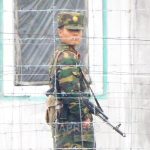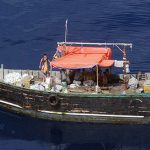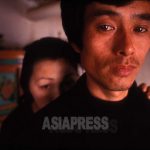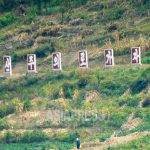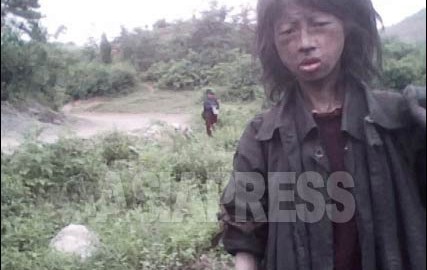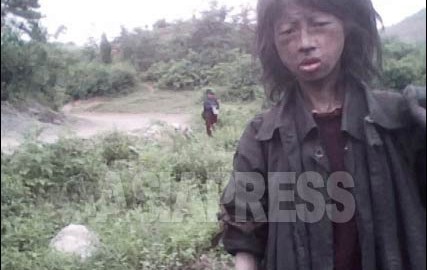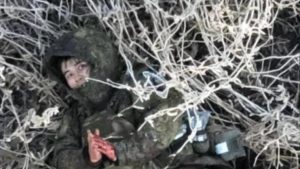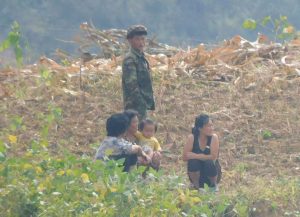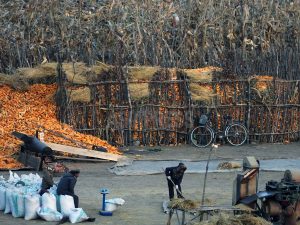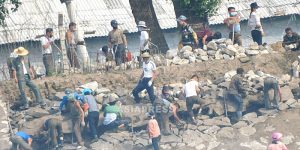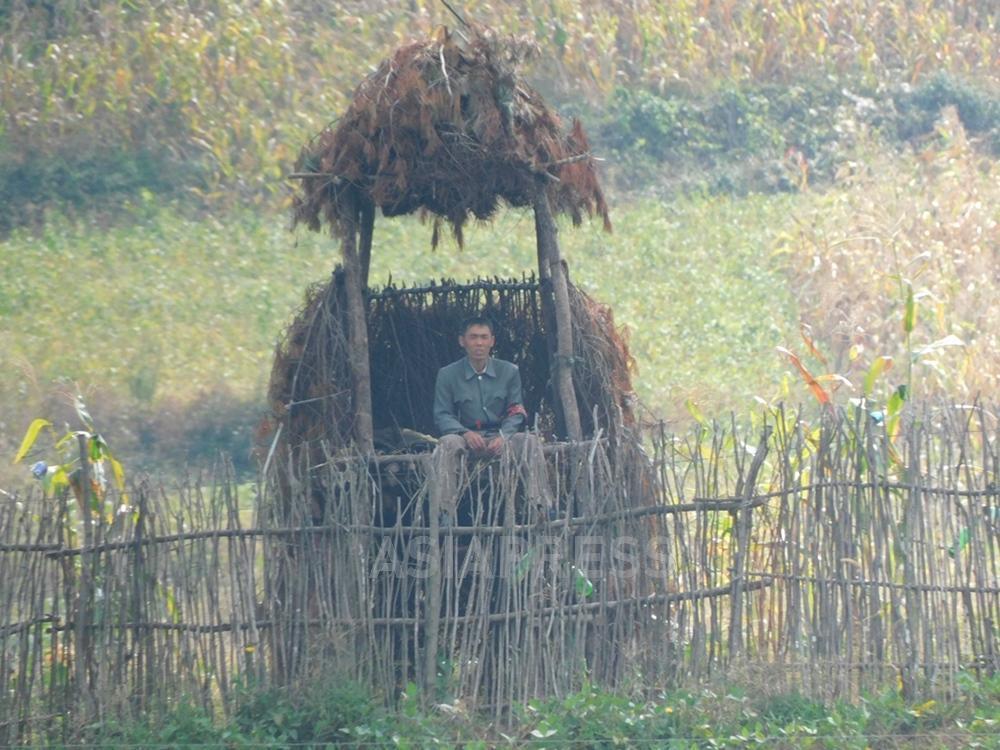
◆ Defecting North Korea is now almost impossible
The era of defections has ended.
After watching the events of the past few years, I have watched how almost the entire 1,400 kilometers of the Tumen and Yalu rivers, which form the border between North Korea and China, have been covered with multiple layers of barbed wire. Under the pretext of "stopping the invasion of the coronavirus,” North Korea has constructed barbed wire and guard posts for several years by mobilizing local residents and the military. Equipment to distribute electricity to the wires has also been added.
In August 2020, a notice from the Ministry of Social Security (the national police agency) was posted at railroad stations and public places declaring that areas near the border have become buffer zones and that anyone approaching without permission would be shot without warning. One of our reporting partners took one down, photographed it, and emailed it to me.
The notice said that people and livestock entering the buffer zone would be shot without warning.
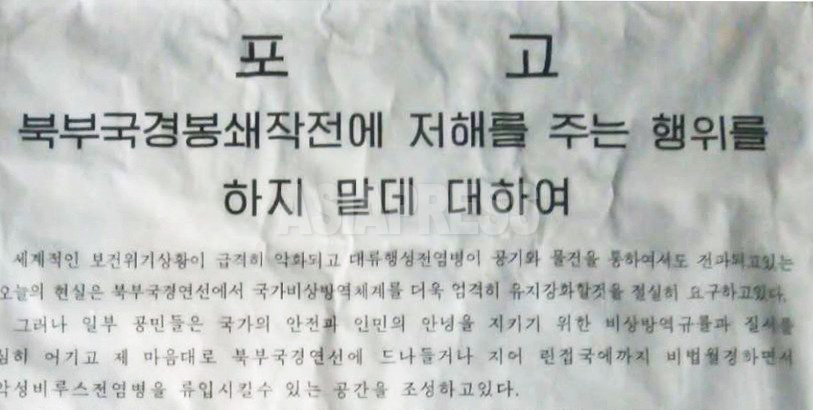
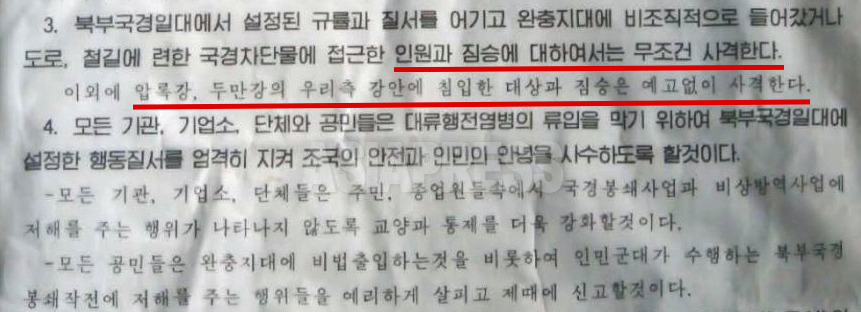
"I should have fled to South Korea before the pandemic, but now it's impossible. I will regret my indecision for the rest of my life,” lamented the reporting partner, who is a single mother raising her middle-school daughter.
Preventing defections and smuggling isn't the only reason the Kim Jong-un regime has tightened security along the border with China. Since the mid-2000s, South Korean cultural content, such as movies and music, has become popular in North Korea, particularly dramas, and much of it comes from across the Chinese border.
At the time, the large number of Chinese cell phones smuggled into North Korea made it possible for people in South Korea and Japan to communicate with North Koreans. It also enabled North Korean defectors to send money to their families. The border with China became a conduit for people, goods, money, and information. For a regime that relies on isolation to survive, this was a situation that could not be ignored.
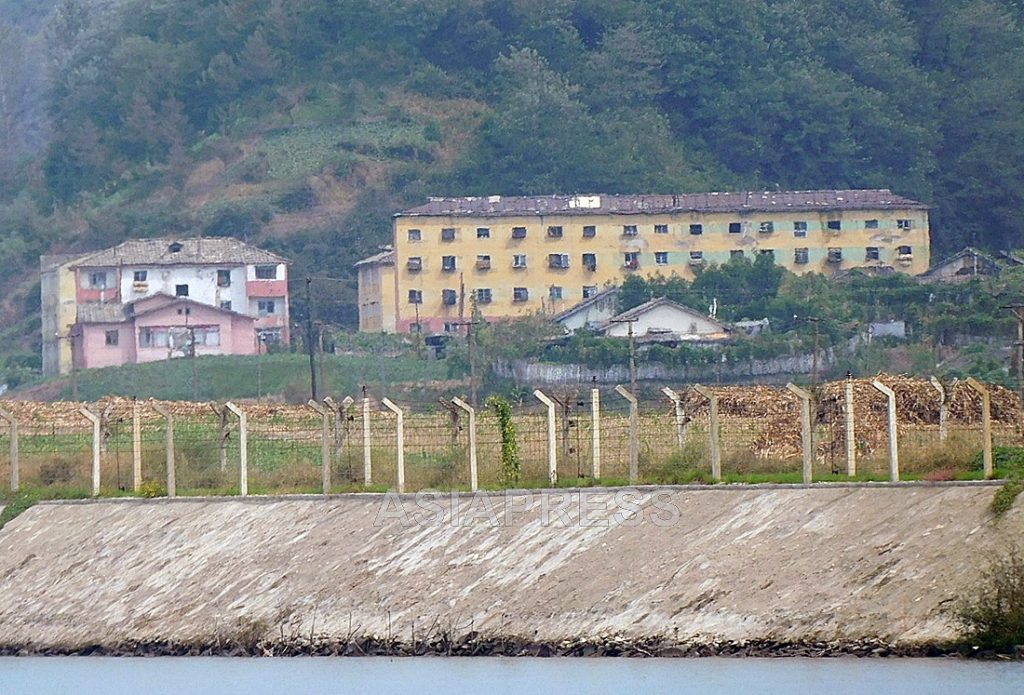
◆ A dramatic fall in defectors entering South Korea
The high point of North Korean defectors entering South Korea was in 2009 (2,914 people). After Kim Jong-un took power in 2012, the number dropped dramatically due to intensified patrols and security along the border, but remained in the 1,000 to 2,000s until 2019. However, the number dropped dramatically to 229 in 2020, falling even further to 63 in 2021, 67 in 2022, and then jumping up a bit to around 180 as of December 2023 (all of this information is from South Korea’s Ministry of Unification).
Moreover, most of the defectors who have entered the country in the past few years have been longtime residents of China and Russia; very few among them fled North Korea after the start of the pandemic.
South Korean researchers and NGO representatives have been able to interview only one defector in 2020 and two in 2021 who left North Korea after the start of the pandemic. They said that South Korea's research on North Korea was bolstered by interviewing new arrivals to update established knowledge, but after the start of the pandemic, obtaining new information became difficult.
(In May 2023, 10 people divided between two families defected to South Korea by boat, followed by another five people who defected by boat in October 2023)
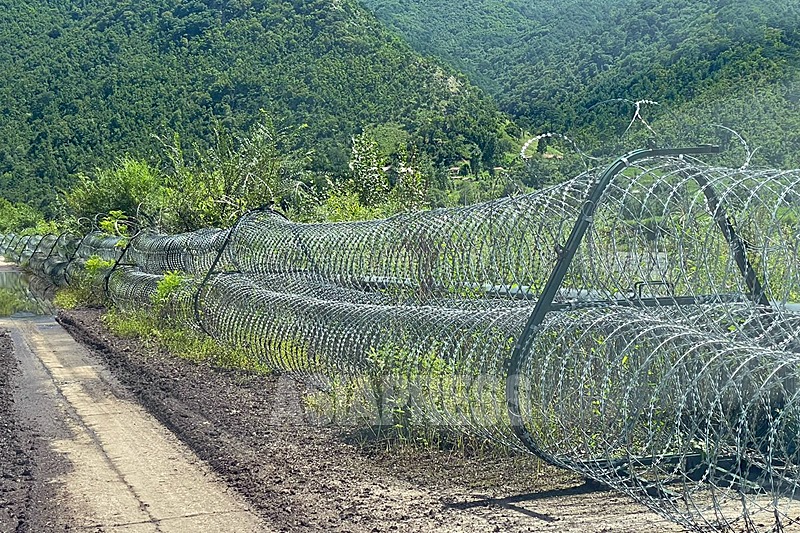
◆ Japanese-Koreans wait forlornly for word from their relatives in North Korea
Currently, there are about 200 North Korean defectors living in the Osaka metropolitan area of Japan. During North Korea’s “repatriation program” that lasted from 1959 to 1984, more than 93,000 Koreans and their Japanese family members crossed into North Korea, and these returnees and their North Korean-born second and third generations are returning to Japan.
They have been exchanging letters with their sons, daughters, and brothers, pretending to be relatives in Japan, and sending cash and other items. In Japan, you can safely send up to 100,000 yen in cash via insured mail. You can also send luggage, although customs scrutinizes it for luxury goods due to economic sanctions on North Korea. These things, however, all stopped with the outbreak of the novel coronavirus.
Since late 2020, I've been getting a lot of inquiries from people asking if they can check up on their relatives, or if they can send money through non-traditional routes. I asked my reporting partners if they could call other people inside the country, but they refused.
"Calling the home of a repatriated person with no connections is like voluntarily putting yourself in the sights of the Ministry of State Security (the secret police)," they told me. In short, they believe that their domestic calls are being tapped.
Ms. A, an 80-year-old Korean-Japanese woman in a prefecture of Kansai - and whose parents and seven siblings returned to North Korea in the 60s and 70s - has been sending remittances to her relatives in North Korea for 60 years. She has lived a frugal life. But with the outbreak of the pandemic, she’s been unable to continue sending letters and money.
"My siblings may be dead. I'm preparing myself that this will be when I lose touch with them," she says.
Ms. A gave me hundreds of letters and photos from her siblings, saying, "Please use this as a resource.” In several albums, she organized photos of her siblings when they lived together in Japan and in their later years in a city in North Korea’s northern region. Ms. A's decision to give away her precious photos was a sign of how well she knew that she couldn’t contact them again. I couldn't help but wonder if the coronavirus pandemic had severed the thin threads that connected such people with their loved ones in North Korea. ( To 3 >> )
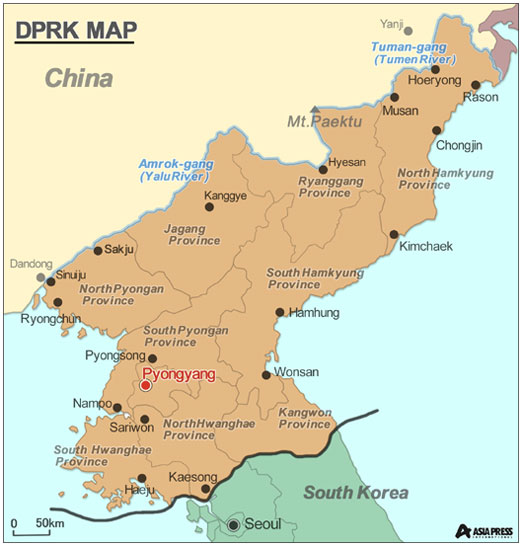
- <Inside N. Korea> Government implements wage hike of more than 10 times (1) Wages increase for employees of state-run enterprises and government agencies
- <Interview> How was the public execution in Hyesan carried out?…In just four months, three executions have occurred in the city… “We were lined up at our places of work and marched to the execution site”
- <Investigation Inside N. Korea> How is the country’s fishing industry doing? (1) COVID and shrinking fishing grounds major problems…Kim regime’s restrictions on fishing lead some fishermen to financial collapse
- <Inside N. Korea> A recent report on conditions at farms (1) The harvest is better than last year, but lack of materials remains a serious problem (4 recent photos)
- <Photo Report>The North Korea-China Border (1) In August, Tumen and the midstream of the Tumen River was quiet
